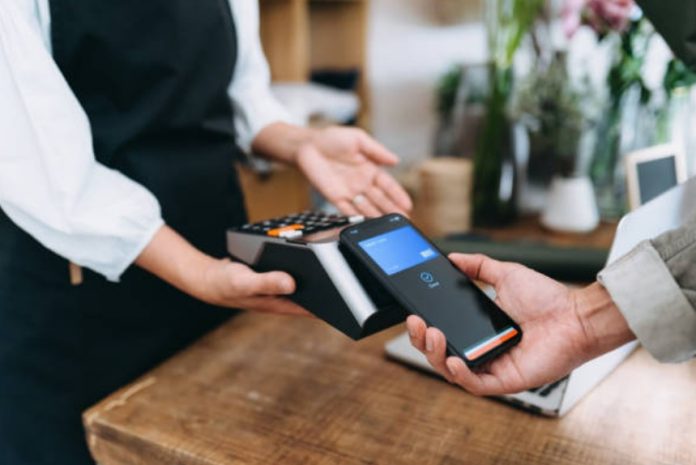Recurring payments, known as recurring billings, automatic payments, or subscriptions, are repeating, electronically processed payments. They repeat on a pre-established schedule. For example, if you are planning to become one of the continuity subscription merchants, use this billing type for your business. In that case, you will need to establish recurring payments to collect membership, lessons, services, and subscription fees. Furthermore, customers must sign an authorization form with recurring payments.
The simplest means of accepting recurring payments is through a comprehensive payment processor or a merchant account. The account should handle payments and has integrated software for managing the billing procedure. It also has security features for the protection of sensitive customer information.
What Is a Recurring Payment?
Recurring payments are payments that customers make for goods or services at regular intervals. Such payment will often occur monthly or weekly, though you can set it to take place at whatever interval you prefer for your business.
These are unique payments in that the customers are not required to avail themselves virtually or physically for payment processing. Instead, as the customer, you will need to consent to share your payment information (usually a credit or debit card) with the payment processor business for charging your card on the preset schedule.
Recurring payments occur in either of two types: variable payments or fixed payments. Customers are charged a constant amount for fixed recurring payments, like gym membership and magazine subscriptions. On the other hand, variable recurring payments imply that the owed amount can change between payments while using usage-based charges such as monthly utilities.
Note that a recurring payment may also be termed an automatic payment, and recurring billing is the charging process of recurring payments. As you research costs with the different payment processors, be keen on these terms to prevent missing the associated fees.
The Working of Recurring Payments for Small Businesses
For your business to handle recurring payments, you will need a payment service provider or merchant account. Both of these facilitate the electronic receipt of payments.
Automatic Payments
Typically, a recurring payment will be charged online automatically. Customers agree to share payment information with the business and make payments per schedule. However, paying through bank debit or payment platforms such as credit cards and PayPal is possible.
The automatic payment is carried out once scheduled charges are processed, and your card is charged without your input as the customer. The process’s backend is similar to if you enter your credit card information on each payment.
The business often sends receipts to customers as proof of payment processing – some types of payment processing services can automate this.
Recurring Invoices
A business can prefer to create recurring invoices instead of automatically charging the customer’s card. The company will need to send an invoice per schedule, and the customer will be left to settle the invoice manually.
Though this will not save you time as a customer, it benefits you as a business owner if you automate the invoices via a payment processor or POS. The shortcoming of this approach is the lack of customer authorization to charge cards if the invoice is not settled on time.
Since the customers are away while charging the card, it would help businesses use recurring payments to require customers to sign authorization forms granting them access to make the charges regularly.
Advantages of Using Recurring Payments for Small Businesses
- Easier invoicing and accounting: Usually, you can integrate your recurring payment platform with your invoicing and accounting systems. By doing this, recurring payments trigger the production of invoices and the recording of credits in corresponding general ledger accounts. This translates to reduced work and enhanced accuracy in your accounting and billing.
- Lesser missed or late payments: Provided that your clients or customers pay you regularly, using recurring payments, they no longer have to remember to pay you. They will instead have the funds withdrawn automatically from their accounts and deposited in yours. The outcome is the reduction of missed or late customer or client payments.
- Easier clients’ accounts payable: When clients know the amount to be withdrawn from their account on a particular date, there is a reduced need to check the accounts payable to match. Instead, they can relax as they watch the accounts payable being credited and the cash account debited. Furthermore, if the customers’ invoicing, payment processing, and accounting are also integrated like yours, the operation of the recurring payment is perfect.
- Subscription models option: If you are a newspaper, magazine, or other digital publication subscriber, you have probably interacted with recurring payments before. Imagine how instrumental it would be for your organization. The monthly payments help your clients and customers maintain smooth access to your platform. The recurring payment subscriptions make your business extra customer-friendly while increasing its efficiency.
- Removes the need to ask for payment from clients and customers: If you are a small business owner, your primary goal is often to make money. However, you probably hate pestering customers for payments. Through recurring payments, you can have your payments automatically done without asking. You will thus have fewer headaches and a better cash flow.
- Simple restocking for your customers: If you manage a B2C organization selling tangible goods that are unusable after some time, customers will need to find the right time to get new goods from you. You can solve this problem with recurring payments. It automates customer payments and includes new customer orders in the inventory management software.
Conclusion
Recurring payments have come to revolutionize the world’s small business payment scene. With it, you are guaranteed convenience both as a customer and a business owner and no longer have to worry about forgetting to make your payments. Small business owners also no longer need to remind clients to make payments, which is sometimes annoying.




































